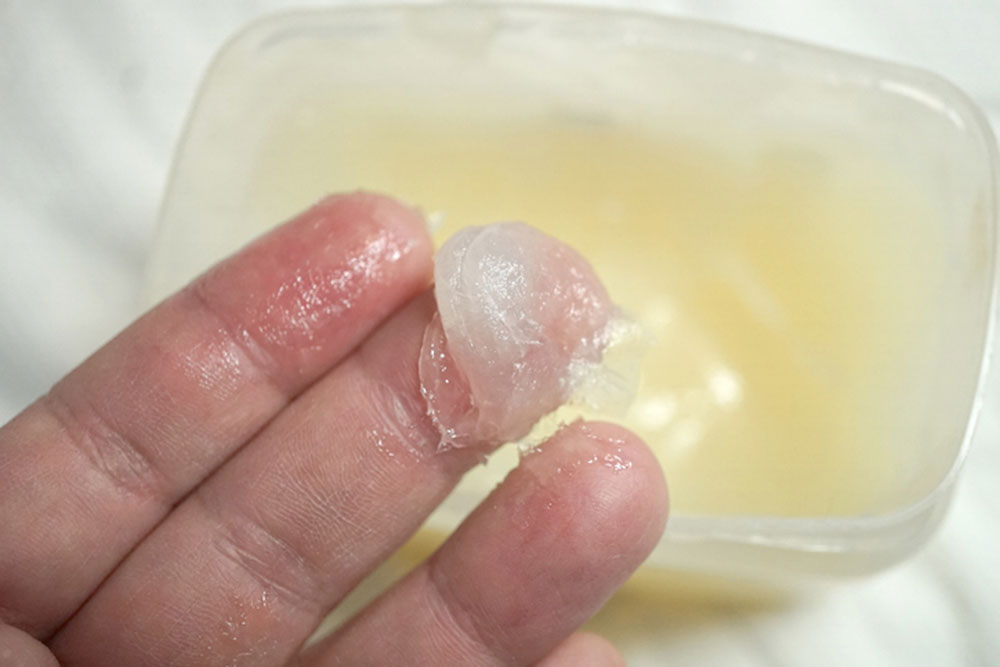
iStock
By Mary Carpenter
“I’D WAGER every woman in America is reaching for that battered old jar of Vaseline that’s been lurking in medicine cabinets for decades,” said NYC editor N.M. “Slugging” —smearing the face with a layer of heavy occlusive such as petroleum jelly at night before going to bed—has recently “taken Tiktok by storm,” according to National News. The practice earned its nickname from “the slimy mess it makes… reminiscent of a slug trail.”
“Initially a K-Beauty trend [originating in South Korea], slugging appears to have first surfaced in the U.S. in 2014,” writes Janna Mandell in the Washington Post.Said dermatologist Joshua Zeichner, at New York City’s Mount Sinai Hospital, petroleum jelly “creates the ideal environment to allow your skin to repair itself.”
For those who dip rarely into the skin-care world, another trend—more important health-wise yet missed by many—is the increasing differences between medical and cosmetic dermatologists. At DC writer W.C.’s recent full-body cancer-screening appointment, the dermatologist either missed or was too uninterested to mention the weeping red poison ivy sores that covered her legs — but also brushed aside her worries about dark spots on her very sore lips. The physician was a cosmetic dermatologist, she later learned, who “must have decided if I’d had no plastic surgery by this point, I was unlikely to become a high-paying or otherwise-rewarding customer.”
Cosmetic dermatologists put “the spotlight on ‘desire’ [while] medical dermatologists target the ‘disease’ aspect of dermatology,” according to the Millburn Laser Practice site. Cosmetic dermatology “is purely aesthetic,” including treatments with Botox, fillers, peels and lasers; and surgical procedures such as skin tightening.
The medical practitioner, on the other hand, “solely treats skin ailments to reduce health risks” —which may mean they pay closer attention and have more frequently honed skills for medical conditions. These can include full-body cancer scans as well as Rosacea—persistent blushing, flushing, and blood vessels visible beneath the skin; alopecia; acne; eczema; psoriasis; and warts.
For the DC writer, the medical dermatologist she saw several weeks later examined the lip spots closely and offered both reassurance that they were not cause for concern and practical suggestions, such as to avoid potentially irritating lip sunscreen except as needed for immediate sun exposure.
Her other suggestion was to regularly apply Aquaphor, an ointment containing humectant moisturizers such as lanolin, but petroleum jelly, too, the most common ingredient for “slugging.” Also called petrolatum and first sold as Vaseline, the jelly creates an occlusive, water-resistant barrier that prevents release of moisture from the skin—and can help maximize the effects of hydrating products.
“At least 10 times a day” is how often Atlanta dermatologist Tiffany Clay recommends petroleum jelly in her practice, “especially for my eczema patients who have a compromised skin barrier and tend to be on the dry side.” The jelly works best on moist skin, especially right after bathing—to create a “moisture sandwich,” explains New York City aesthetician Charlotte Palermino, the original social media popularizer of slugging, who says it makes her dry skin “juicy.”
“You hydrate your skin, you moisturize your skin, and then you trap it all in with an occlusive,” Palermino explains. For slugging, she advises using a pea-sized portion of the jelly, also covering one’s pillow with a towel for protection. (Slugging may cause problems for skin that is oily or prone to acne.)
Moisturizers for use with petroleum jelly should be fairly mild and not include “active ingredients” such as retinoids or exfoliants, which could damage the skin. The best moisturizing emollients are ointments that employ Vaseline as the base, with added mineral oil — but can also include lotions, which contain water but often have added fragrances; and creams, which contain slightly more Vaseline. Humectants, by contrast, work by attracting moisture from the air—but in dry conditions can draw too much moisture from lower layers of the skin.
The slimy trail made by slugs and snails is mucus, with qualities of both a glue and a lubricant that helps the creature glide forward when pressure is lifted or stick to surfaces when pressure is applied, according to BBC Science. Investigations are now underway to see whether the “adhesive and elastic properties of this slime…might lead to a synthetic glue that’s capable of repairing tissue damage.”
Slugging turns out to be something I’ve done for decades, though I’m rarely so up on trends, to battle very dry skin. My concoction is about one-half lanolin—with a little almond oil to counter the sheep smell and a few squirts of some commercial liquidy cream like Lubriderm to make mixing easier. The other half is Vaseline, requiring the towel for pillow protection but making it too greasy for most friends —although with slugging so hot, some may come around.
—Mary Carpenter regularly reports on need-to-know topics in health and medicine.

A friend in her late 70’s who has the most extraordinary skin has never used anything except Crisco since she was a teenager. She slathers her whole body with it each evening.